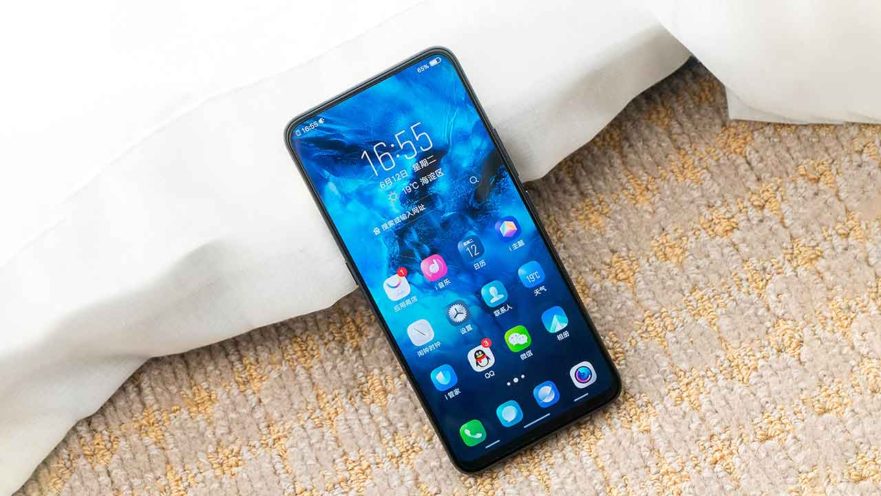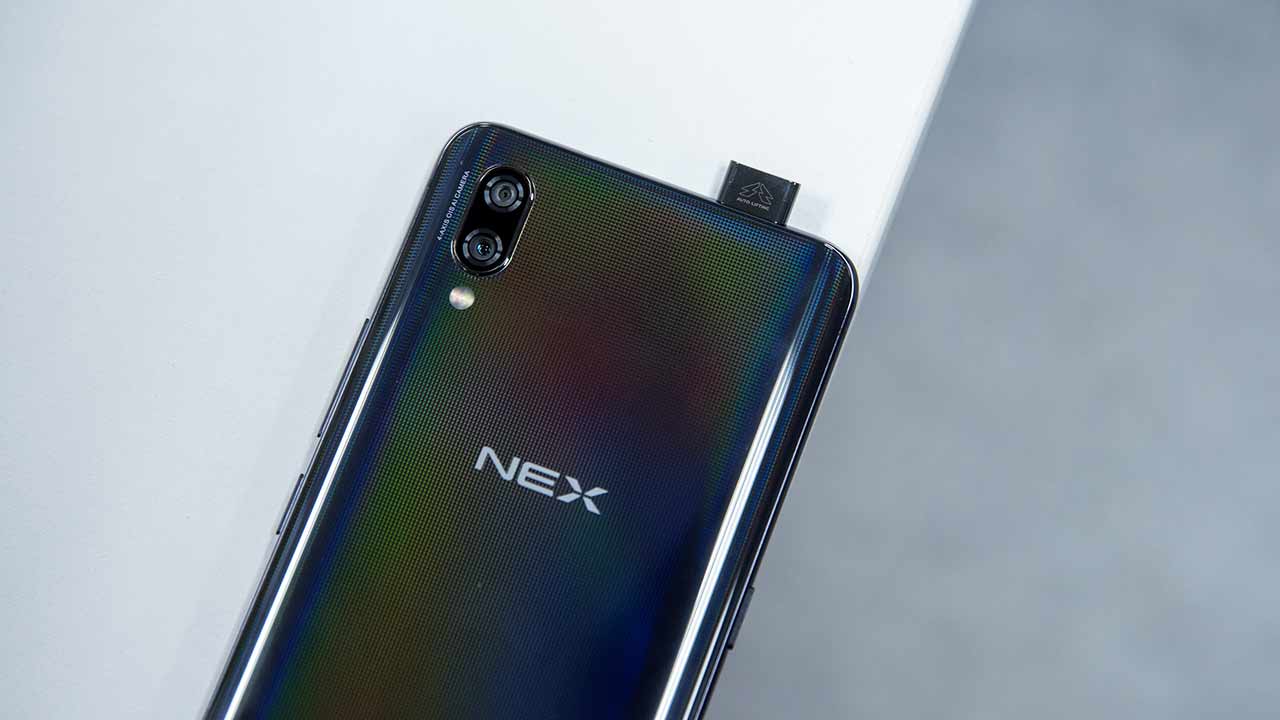We’re a step closer to a bezel-less future, as Vivo finally takes the wraps off what could be one of the most exciting smartphones this year, the Vivo NEX.
The idea sprung from the Vivo APEX concept phone that was showcased at MWC in Barcelona, Spain. Its bezels are so slim; the top is just 2.16mm thin; the bottom, 5.08mm; and the side, 1.71mm. To achieve an impressive 91.24 percent screen-to-body ratio — the highest one thus far — the Chinese company has to adopt three technologies.

Vivo NEX vs Apple iPhone X: Notch or no notch? Your choice.
Instead of putting the NEX’s 8-megapixel front camera in a notch, Vivo decided to make it pop up in under a second every time one needs to take a selfie — and retract after that. The camera can supposedly push up to 500g and withstand up to 45kg of thrust force. It can also be raised and lowered up to 50,000 times. Only time will tell if that’s true, but we’d love for it to be correct.
The whole 6.59-inch display has been turned into a speaker, thanks to Screen SoundCasting Technology. It’s believed to add more powerful bass and softer, smoother treble.
The Vivo NEX, just like the company’s own X20 Plus UD and X21 UD, uses an under-display fingerprint sensor. But unlike the two, the one used in the new smartphone is a third-generation sensor that Vivo says is 50 percent more accurate at detecting fingerprints and has 10 percent faster unlock speed.
Vivo TV commercial for the 2018 FIFA World Cup Russia featuring the Vivo NEX
As expected, the Android 8.1 Oreo-based device is packed with the best chipset in Qualcomm’s Snapdragon 845 paired with 8GB of RAM and up to 256GB of memory. The base model with 128GB of storage is priced at ¥4,498 (P37,276 or $702) while the higher-specced unit costs ¥4,998 (around P41,420 or $780).
There’s a cheaper Vivo NEX version, something that is powered instead by Qualcomm’s Snapdragon 710, the same processor found in the Xiaomi Mi 8 SE. The chip is matched with 6GB of RAM and 128GB of built-in memory. The handset retails at ¥3,898 (P32,304 or $609).
We’re not sure if the Vivo NEX is coming to the Philippines, but we sure hope it will. It’s a pity if a piece of technology this great can’t at least be seen by Filipinos.
Vivo NEX S (256GB)
- Fingerprint reader (in-display)
- 6.59-inch AMOLED display, 2,316 x 1,080 resolution (19.3:9)
- Octa-core Qualcomm Snapdragon 845 processor
- 8GB RAM
- 256GB non-expandable storage
- Dual 12- and 5-megapixel rear cameras with LED flash
- Pop-up 8-megapixel front camera
- 4,000mAh battery
- Android 8.1 Oreo
Vivo NEX (128GB)
- Fingerprint reader (in-display)
- 6.59-inch AMOLED display, 2,316 x 1,080 resolution (19.3:9)
- Octa-core Qualcomm Snapdragon 845 processor
- 8GB RAM
- 128GB non-expandable storage
- Dual 12- and 5-megapixel rear cameras with LED flash
- Pop-up 8-megapixel front camera
- 4,000mAh battery
- Android 8.1 Oreo
Vivo NEX A (Snapdragon 710)
- Fingerprint reader (rear-mounted)
- 6.59-inch AMOLED display, 2,316 x 1,080 resolution (19.3:9)
- Octa-core Qualcomm Snapdragon 710 processor
- 6GB RAM
- 128GB non-expandable storage
- Dual 12- and 5-megapixel rear cameras with LED flash
- Pop-up 8-megapixel front camera
- 4,000mAh battery
- Android 8.1 Oreo
Images via Sohu
Share this Post




